If you're into cocktails, you've probably heard the word "amaro" thrown around pretty often. What is an amaro liqueur, and why are they so popular? Here's your guide to everything you need to know about this bittersweet category of spirits.

Jump to:
What is Amaro Liqueur?
An amaro (plural of amaro: amari) is a type of Italian liqueur. The word amaro means bitter in Italian, and that is one of the defining flavor characteristics of amari. Each one has its own secret recipe: unique combinations of herbs, roots, and other botanicals that give it a special flavor all its own.
One of the reasons it's so hard to pin down this type of liqueur is the looseness of the definition. It has to have bitterness and sweetness, and it has to have alcohol and sugar, but there is a massively wide range of flavors this covers.
This also means that each Italian amaro is essentially like no other. Unlike vodkas or whiskeys, in which you kind of have an idea of what types of flavors to expect when you open a bottle, amari can be vastly different from one brand to the next. This can make it hard to substitute one for the other, but it's also an amazingly easy way to add depth of flavor and complexity to your mixed drinks.
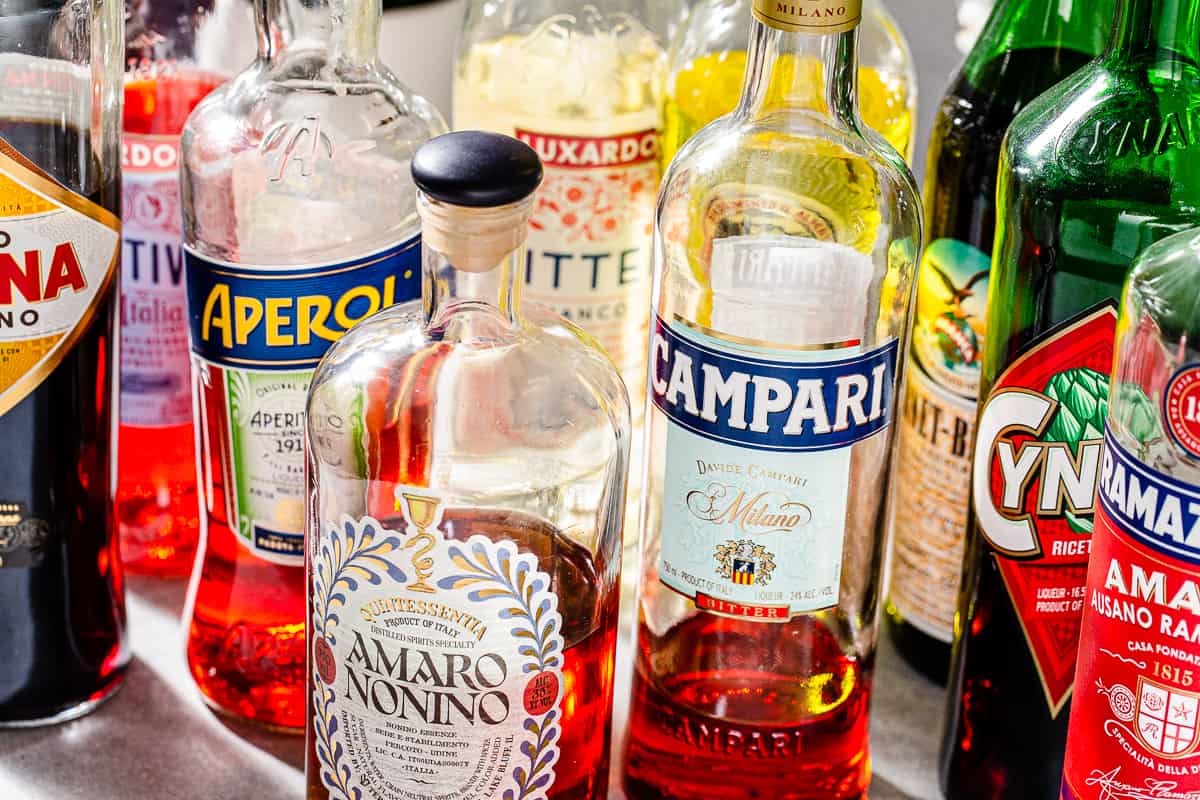
How Do You Drink Amari?
Although they are wonderful ingredients in cocktails, amari are very often sipped on their own in a small shot glass. Enjoying them "neat" like this (and at room temperature) is the traditional way, so you can get the full expression of flavors and health benefits. They are used as either an aperitivo (aperitif) taken before a meal, or, more commonly, a digestivo (digestif) after a meal.
Another increasingly popular (and refreshing) ways to enjoy amari is in the Amaro Spritz cocktail, where the spirit is combined with Prosecco sparkling wine and seltzer water. These drinks are typically served during "Aperitivo Hour", the magic hour of a summertime sunset.
History of Amaro
Amaro has a long and rich history that dates back centuries, with evidence that it was even around during Roman times. Like bitters, amari were originally used medicinally, to cure everything from aches and pains to digestive ailments.
Small towns would develop their own unique recipes using local ingredients like roots, bark, herbs and citrus peel. Common flavoring ingredients were gentian, anise, sage, and even artichoke. This proud local tradition continues to this day, with small bars across Italy making their own unique "house" liqueurs.
But everything changed in the 1800's with the start of modern manufacturing techniques and shipping methods. Companies were now able to bottle and brand their secret recipes, allowing them to more easily share their products with a wider audience and start to gain recognition for their unique flavors. They sold the liqueurs as health tonics at first, but people began to appreciate them for their complex flavors too, and a new era of amari began.
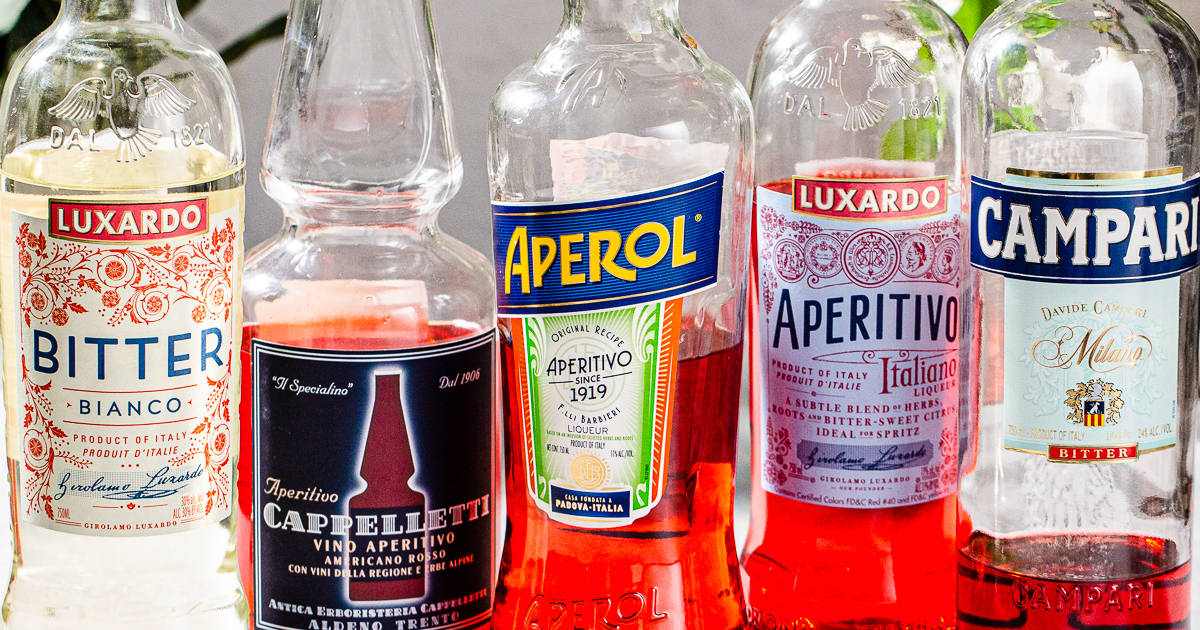
How is Amaro made?
Amaro is made by blending a base of neutral spirits or wine with a variety of herbs, spices, blossoms, and fruits. Traditionally, the base spirit is grappa, which is a brandy made from the leftover grapes and seeds of wine production, but any neutral spirit can be used.
The maker will choose their own blend of bitter herbs such as gentian, cinchona bark, rhubarb and bitter orange. Then, they add in other flavoring ingredients like citrus, cardamom, and saffron. These ingredients are all macerated (mashed together) with the base liquid. Then, sugar syrup is added in, and the whole mixture is aged in casks or oak barrels for anywhere from a few months to a few years.
After it's aged, the mixture goes through a final filtration process. This is to make sure that the liqueur is free from any sediment before bottling and distribution.
Common Types of Amari
We can usually classify an amaro liqueur based on whether it's intended as an aperitivo (before dinner) or digestivo (after dinner) drink. Aperitifs tend to be lighter, both in flavors and in alcohol content, whereas the digestifs are a little sweeter, but also more complex and bitter. (Of course, there are lots of exceptions! They're amari, and they can't be tied down!)
Popular Aperitivo Style Amari
- Campari aperitivo liqueur - this vibrant red liqueur is arguably the most well-known amaro. One of the main ingredients of the popular Negroni and Negroni Sbagliato cocktails, it's also used as an aperitif in lighter spritz-style drinks. It has alcohol content in the 20.5–28.5% range (based on where you buy it), and it has strong bitter citrus flavors along with gentian and rhubarb.
- Aperol liqueur - this bright orange-colored aperitif liqueur is citrusy and herbal, but also very sweet. It has a lower alcohol content than most other amari at 11% and is best known as the main ingredient of an Aperol Spritz. For bitterness, it has notes of bitter orange, gentian, and rhubarb.
- Aperitivo Cappelletti - although this liqueur has a deep red color like Campari, it has a different flavor profile and uses wine as its base. You will need to refrigerate this bottle due to the wine content, but it's worth the fridge space! It makes an amazing Boulevardier cocktail. It has lower alcohol content (17%) and less bitterness than Campari with a smoother, more herbal flavor.
- Luxardo Bitter Bianco - this unique and delicious amaro is almost completely clear in color, giving you lots of room to play around with color in your cocktails. It has a higher alcohol content (30%) than most others in this category. It has its own special blend of bitter herbs and botanicals, with some citrusy flavors, and a final infusion of wormwood as a finishing touch. The Luxardo company also makes a red aperitivo style liqueur, which is more akin to Campari.

Popular Digestivo Style Amari
- Averna Amaro - this dark brown liqueur is on the sweet side, with some licorice root and gentian flavors. At 29% alcohol, it is on the strong side. It has deep caramel notes and is most well known for the Black Manhattan cocktail.
- Amaro Montenegro - this liqueur has a unique and complex flavor that includes vanilla, bitter orange, eucalyptus, and other herbs and spices. This amaro has been in production since 1885 and is widely used as a digestif. At 23% ABV, it has a little less alcohol than Averna.
- Ramazzotti Amaro - this is a dark brown amaro that is 30% alcohol by volume. Flavor-wise, it has a lot of caramel and vanilla, along with some citrus, licorice and other herbal notes.
- Cynar liqueur - this liqueur is famously made with artichokes and even has one on its label. Its name derives from the scientific word for artichoke (Cynara scolymus), but it doesn't really taste like them! It is very sweet, with an herbal undertone and vanilla and spice notes. It has a lower alcohol content at 16.5%.
- Fernet-Branca liqueur - this is the most well known of the fernet category of amari. These liqueurs are more intensely bitter and almost medicinal in flavor than the others, and Fernet-Branca is no exception. It has a lot of herbal flavors with a strong mint flavor. It is also higher in alcohol, at 39%, which is almost the same as a typical vodka or other unsweetened spirit.
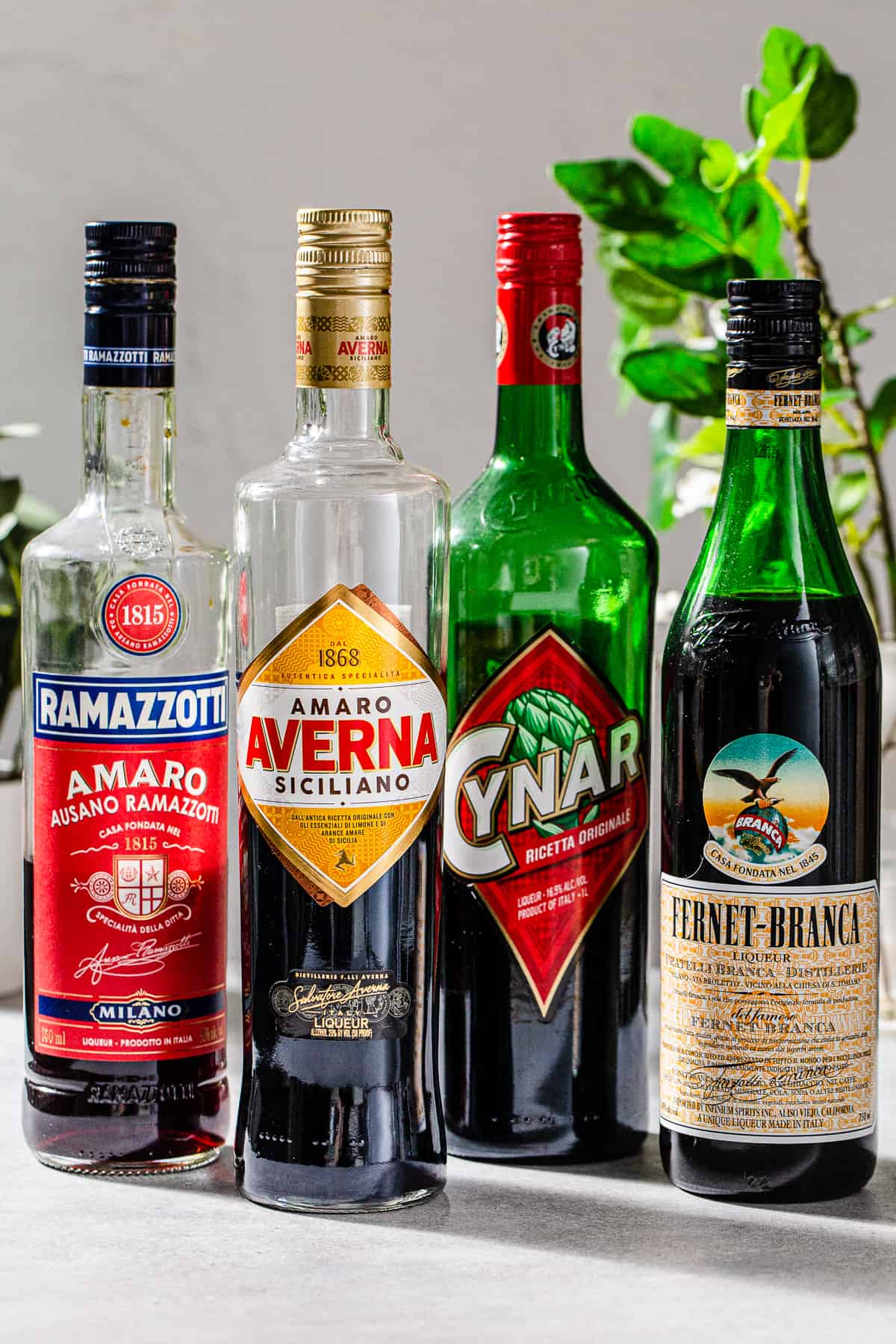
Even More Popular Amari
- Amaro Nonino Quintessentia - this amaro is a golden brown color and has a higher alcohol content at 35%. It has a flavor on the more mild side, with some honey and vanilla flavors, but still with a slightly bitter undertone. Its most well-known mixed drink is the Paper Plane.
- Strega liqueur - this bright yellow colored liquor has a high alcohol content of 40%. It has very strong herbal and botanical flavors that include saffron, mint and juniper. It is more herbal than bitter, but also has a lot of sweetness and honey flavor.

Cocktails that use Amaro Liqueur
There are lots of cocktail recipes that call for an amaro liqueur. Here are few popular ones, and some of my original recipes too!
- Negroni - one of the world's most popular cocktails, containing gin, sweet vermouth and Campari.
- Negroni Sbagliato - this tasty cocktail recipe soared to popularity in 2022 after a viral video. It substitutes Prosecco for the gin in the classic Negroni.
- Aperol Spritz - this summertime classic has Aperol, Prosecco and sparkling water. Just make the Amaro Spritz recipe using Aperol to enjoy this refreshing drink.
- Aperol Sour - this deliciously frothy and citrusy drink combines Aperol with gin, lemon juice and pasteurized egg whites for a silky yet refreshing drink.
- Paper Plane - a citrusy and delicious drink, this has equal parts of bourbon, Aperol, Amaro Nonino and lemon juice. (Bon Appetit recipe)
- Little Italy - also known as a Cynar Manhattan, this drink combines bourbon with sweet vermouth and Cynar.
- Black Manhattan - this drink is a riff on a typical Manhattan, mixing two parts of bourbon with one part Amaro Averna instead of sweet vermouth. (Liquor.com recipe)
- Jungle Bird - a tropical inspired drink, this combines Campari with rum, pineapple, lime and demerara syrup. (Liquor.com recipe)
- Rum & Ramazzotti - this tasty riff on a classic Jungle Bird uses Ramazzotti liqueur in place of the Campari. Since it's not as bitter, you don't need the extra syrup.
- Strawberry Tequila Cynar - this drink is on the strong side, like a Manhattan, and combines a strawberry-infused tequila with herbal and sweet Cynar.

Common Amaro Questions
Campari is definitely considered an amaro! Its combination of bitter citrus and herbal notes, plus lots of sweetness, put it firmly in the amaro category. It is on the lighter, more citrusy side flavor-wise, so it's often used for a spritz aperitif or in a Negroni cocktail.
Although the names are similar, Amaretto (literally meaning "a little bitter") is actually not an amaro. Amaretto is a liqueur flavored with either almonds or apricot kernels. Almonds do have a slight bitterness to them, which is likely where the name came from.
Although it's made in Germany instead of Italy, Jägermeister is still considered an amaro. It has a strong bitter flavor along with many herbal notes from over 50 different herbs and spices, including citrus and licorice.
Most amari don't need to be refrigerated, although there are some exceptions. If the amaro has wine as a base, like Cappelletti, it should be refrigerated after opening. This is because the wine can oxidize and throw off the flavors. (The same is true for vermouth or any wine-based liqueur.) Just check the label on the bottle to see if you'll need to refrigerate yours.
Although it has both bitter and sweet flavor notes, vermouth is considered a fortified wine. In contrast, although some amari do contain wine, the primary base is a neutral spirit (often grappa).
Further Reading
Looking for even more of a deep dive into the world of amari liqueurs? These books go into much more detail about these complex and wonderful spirits!
- Amaro: The Spirited World of Bittersweet, Herbal Liqueurs, with Cocktails, Recipes, and Formulas by Brad Thomas Parsons
- The Big Book of Amaro by Mateo Zed
- Bitterman's Field Guide to Bitters & Amari by Mark Bitterman
Looking for more cocktail inspo?
Subscribe to our newsletter and never miss a recipe! You'll get our free weekly email straight to your inbox with recipes, news and other goodies. Cheers! 🥂




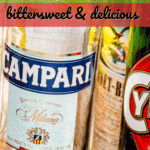
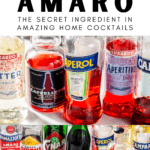
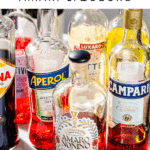
Brian says
Capari, Aperol, Select, Luxardo Bitter, all the other similar orange/red aperitivi, are not considered amari in Italy or anywhere in Europe. Have you ever seen one of the hundreds of similar aperitivi with the word amaro on the label? No.
Amari are digestivi and are drunk after a meal, aperitivi are drunk before a meal, or even with no relation to a meal.
Consider Matteo Zed's Big Book of Amaro. (Mateo was Italian Bertender Abroad of 2013.) Approximately 400 different amari are discussed. And yet there isn't one mention of Campari, Aperol, or any similar aperitvo. Not one, and Capari and Aperol are ubiquitous all over Italy. They are found at every bar, restaurant, cafe, and even coffee bars with seating.
Vermouths bear a closer relationship to amari the the orange/red aperitivi. And yet even Punt e Mes isn't considered an amaro.
Kimberly says
Hey Brian! Thanks so much for your comment!
I decided to include the category of red/orange Italian bitter liqueurs after my research into this topic. There is definitely a debate on this within the cocktail world, but according to the “legal” definition of amari, Campari is for sure under that category. (Here is a link to the European Union’s regulation document: PDF: REGOLAMENTO (CE) N. 110/2008 DEL PARLAMENTO EUROPEO E DEL CONSIGLIO I know it’s in Italian but the legal definition is on pg. 25).
Specifically for Campari and the Luxardos, the bottles have the word “bitter”, which from the link above falls under the same legislation as putting the word “amaro” on the bottle.
The gist is that the spirit has to have a predominantly bitter taste, coming from flavoring ethyl alcohol. They also have to have a minimum strength of 15% ABV. Other than that, there is no definition of the spirit's usage, whether as an aperitivo or digestivo.
I will give you Aperol, since it is under the 15% requirement! But other than that I feel pretty comfortable including them in this guide.
Thanks again for your comment, always great to include other perspectives!
Cheers,
Kim